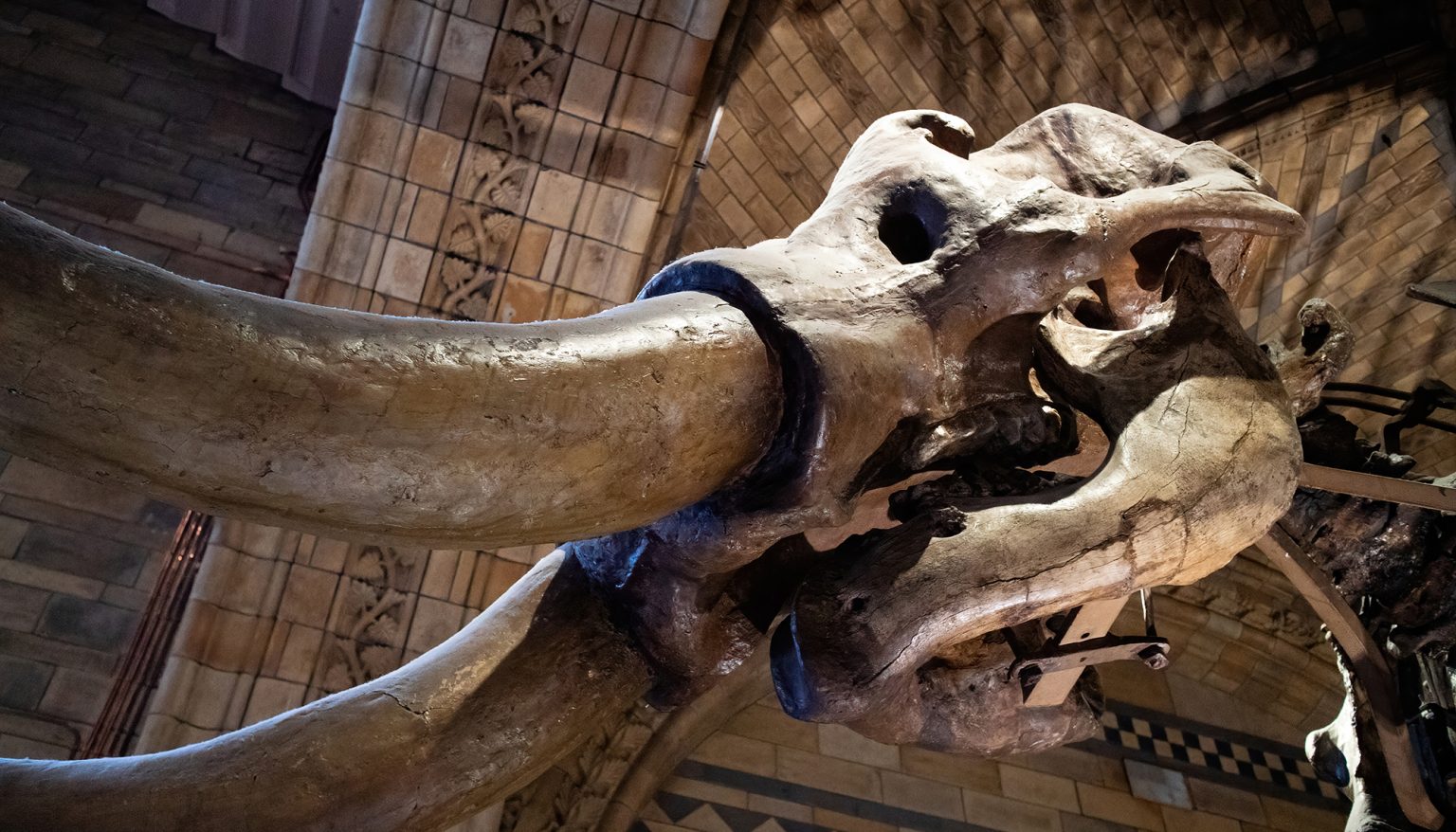A 13,600-Year-Old Mastodon Skull Was Found On Someone’s Property In Iowa

In south-central Iowa, a roughly 13,600-year-old mastodon skull was unearthed from a creek bed on private property.
It is the first well-preserved mastodon skull ever found in the state. Archaeologists believe that the creature may have crossed paths with early humans.
Two years ago, residents of Wayne County, a rural area located about 80 miles south of Des Moines, reported seeing a long bone sticking out of the creek.
It was identified as a mastodon femur bone. Recently, archaeologists and local community members spent 12 days excavating the site.
Their efforts yielded several mastodon bones, including an enormous skull with a tusk still attached. Overall, about 20 bone fragments were dug up, and they all likely belong to the same mastodon.
Radiocarbon dating revealed that the specimen was about 13,600 years old. Next, the researchers will analyze the remains to determine if humans caused the mastodon’s death or if they interfered with the carcass in any way.
“We’re really hoping to find evidence of human interaction with this creature—perhaps the projectile points and knives that were used to kill the animal and do initial butchering,” said John Doershuk, the director and state archaeologist at the University of Iowa Office of the State Archaeologist.
Mastodons are large mammals that are now extinct, similar to elephants and mammoths. They were slightly smaller than woolly mammoths, weighing in at around six tons.
They roamed North America, from what is now Alaska to central Mexico, between 3.5 million and 13,000 years ago.
Birute Vijeikiene – stock.adobe.com – illustrative purposes only
Sign up for Chip Chick’s newsletter and get stories like this delivered to your inbox.
Shortly before the end of the Ice Age, around 11,700 years ago, they disappeared from Earth due to climate change and hunting, according to the San Diego Natural History Museum.
The results of the study indicate that the mastodon lived at the same time as some of the first Americans in the area, so it may have encountered humans.
Several human-made artifacts, including tools, were discovered at the site as well. The tools were a few thousand years younger than the mastodon skull, but they confirmed the first-ever evidence of human occupation at the creek.
The bones themselves may also serve as evidence due to possible cut marks on their surfaces. However, further analysis is needed in order to identify them as cut marks confidently.
After the research is completed, the remains will be sent to the Prairie Trails Museum in Corydon, Iowa, to be displayed in a new exhibit.
The fossilized remains of mastodons and mammoths are found pretty frequently across North America.
For instance, in June 2023, a woman came across a molar tooth that belonged to a mastodon while walking on a beach in California.
Furthermore, in October 2022, a married couple found a mammoth femur on a beach in Alaska after a typhoon hit the area.
Welcome to Billionaire Club Co LLC, your gateway to a brand-new social media experience! Sign up today and dive into over 10,000 fresh daily articles and videos curated just for your enjoyment. Enjoy the ad free experience, unlimited content interactions, and get that coveted blue check verification—all for just $1 a month!
Account Frozen
Your account is frozen. You can still view content but cannot interact with it.
Please go to your settings to update your account status.
Open Profile Settings